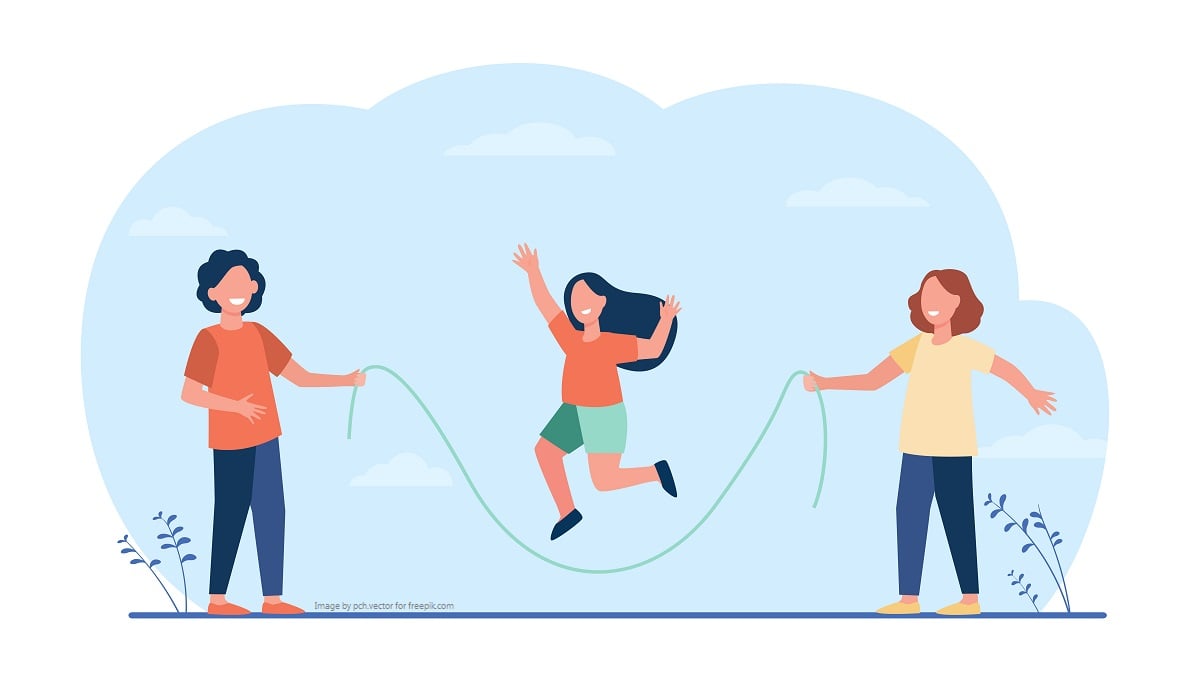
Every April is Move More month, created by the American Heart Association to motivate people to increase their activity and improve their health. Physical activity benefits more than the body’s health; studies have shown that physical activity also improves attention, mood, and reasoning skills. For example, increased activity has shown to improve concentration and sharpen memory. How?
Endorphins, naturally produced chemicals by the nervous system to cope with pain and stress, are released causing elevated feelings of joy and pleasure. When engaging in activities such as exercise, listening to music, dancing, and laughing the release of these ‘feel-good’ chemicals can help a person feel better and think clearly. It seems obvious then that including physical activity helps the whole person. This is especially important for our youth who spend an increasing amount of time in front of a screen. They need to move not only for its physical benefits, but also cognitive and emotional gains.
Here are some simple activities to incorporate more activity, thus improving concentration, focus, and memory retention for your students.
- Add stretch breaks to lessons.
Break up learning into 10–20-minute chunks, adding stretch breaks or 1–2-minute movement activities (arm stretches, march in place, knee raises, etc.) to resharpen students’ focus.
- Use exercise as transition between lessons.
After completing a lesson or activity and moving to the next one, have the class do a short 1–3-minute exercise such as jogging in place, jumping jacks, push-ups, etc. This will not only give students a release from having to sit and focus for an extended period but prepares them for what’s coming with a more positive attitude and view.
- Play games.
This may be challenging with safety precautions now set in place for in-school attendance, but with slight modifications students can still enjoy playing a few games. Here are some to consider:
- Noodle Tag – Play in small groups (3-5 students) and give each a pool noodle. When someone is ‘It’ they have to tag the others using the end of the noodle. Variations can include tap students with blue shirts on, shoes with laces, or wearing shorts.
- Freeze Dance – The whole class can play this timeless favorite! Everyone dances to the music being played. When the music is paused, the students freeze in place. Anyone who moves is ‘out’ of the round. Try using classical music and watch how your students’ imaginations influence their dance movements.
- Simon Says – Choose a ‘Simon” (model first) to give simple movements students should follow (Simon says, Jump in place. Simon says, Touch your toes. Simon says, Reach up high.). A variation of the game is to have students do the opposite of what is asked.
- Scavenger Hunt – Have students find items on a list such as “Find something that is green.” Or, to simplify, have students find items using the alphabet - Find something that starts with A, B, C, and so on. This game is broad enough so that students hunt for proper nouns, primary colors, items they can say in a different language (shoe – zapato, pencil – lapis, paper – warqad, etc.).
- Act out concepts.
Have students create skits, songs, or dances to explain what they’ve learned. For example, students can demonstrate the water cycle through movement, role play a math story problem, or create a dance to explain a new skill (think “Tik-Tok” to show adding correct punctuation to sentences).
- Incorporate science.
Use physical activity and exercise to explore science concepts and skills such as collecting and analyzing data. For example, MyStemKits lessons are aligned to Next Generation Science Standards and they have a 3-D printable kit that is paired with the Labdisc portable STEM lab – Our Heart Rate. Students are introduced to the function of the heart to learn how it adapts to our behavior.
The Labdisc also has lessons on collecting data related to physical activity – Feel the Beat, Right on Target, and Sweat Production. The Labdiscs are compact, easy-to-use, and transportable so they are perfect for remote learning environments.
Make it a goal to incorporate more physical activities with your lessons this month. Keep heart, body, and brain healthy with simple activities that you can start today!
For more information on STEM solutions that support student learning of critical 21st century skills, go to boxlight.com/stem-education.


